Just over seven months ago I posted a financial/sales article letting people know how well Wayward launched in the current comic market using Skullkickers, my previous creator-owned series, as a comparative benchmark. Now that Wayward’s second story arc is complete and I have more sales data to look at I thought it would be good to post an update.
I’m happy to say that Wayward is doing well in a very, very competitive market. With both Marvel and DC putting out a ton of new #1 issues and Image on an incredible roll with new creator-owned series, the shelves at comic shops are absolutely jam-packed and it can be hard to stand out. Every series goes through periods of attrition, and that’s to be expected, but my biggest fear has been that we’d get completely lost in the shuffle and our readership would plummet.
Here’s how initial sales have held up through 10 issues:

Wayward arc 2 stabilized quite well and it looks like we may have found our ‘level’. The drop between issue 7 and issue 10 for Final Order Cut-Off (when comic retailers finalize their order numbers) was less than 500 copies and the gap between each one has gotten smaller and smaller. The variance between issue 9 and 10 was less than 50 copies. What doesn’t show up on that chart is that we’ve also been getting steady reorders on earlier issues and, once you factor those in, the series has even more stability at this point in time.
This doesn’t mean that we don’t have any concerns. Creator-owned books are always vulnerable to market fluctuations and even small drops that accumulate over the long haul could push us into a situation where the series isn’t financially viable. Arc 2 was stable but we need to make sure we keep readers around through arc 3 and beyond. My fingers are crossed that we’ll get a small post-trade bump on Wayward #11 (have you pre-ordered your copy yet?) to keep us rolling.
Okay, so sales look good, but how does that translate into initial earnings:
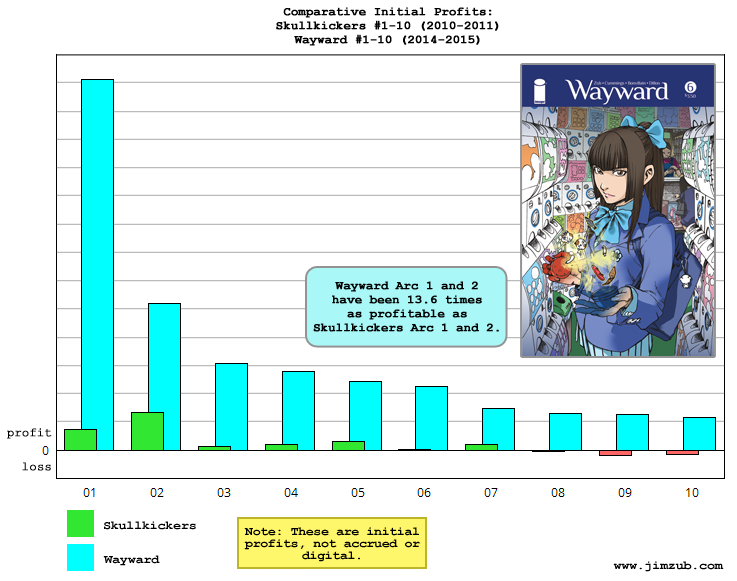
You can see that even a slight variance in sales can have a larger effect on profits. Again, we’re seeing overall stability, but there is some drift there as it moves along.
By this point in its life cycle Skullkickers was already struggling to turn a profit in single issue print sales while Wayward is covering its production costs. What that means is that the art team (Steve, Tamra, and Ludwig) gets paid, our letterer (Marshall Dillon) gets paid, our back matter essay writer (Zack) gets paid, and Image gets their base fee without me having to dip into my personal savings to cover any of the bills. The small amount of profit leftover month to month isn’t much but that’s okay. I’m in for the long haul with convention book sales, digital/print accruals, and co-ownership. I was also able to sock away some money from our big first issue for my “future project war chest.”
Let’s look at the latest issue breakdown of who gets what:
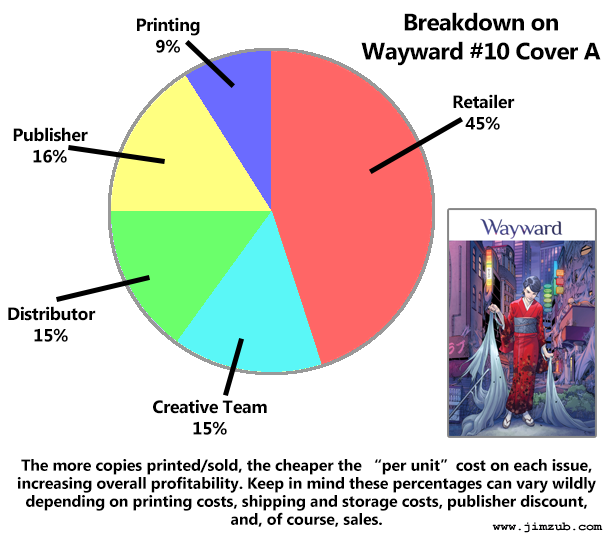
As you can see, those percentages have moved around compared to Wayward #1 Cover A (which had a massive print run compared to issue #10, skewing the numbers quite a bit). With Image’s flat rate fees and the changing price of printing, shipping, storage, and distribution each issue will vary, but this seems to be a more “normal” breakdown for our series. It’s also a more of a balance as the creative team, distributor, and publisher have a stake in the series. As I mentioned before, being with the 3rd largest comic publisher in North America during their current renaissance has been a huge benefit. Image has been able to leverage their hit series to bring down printing costs and negotiate terms that leave more money for them and the creative team.
Let’s look at accrued sales and digital:
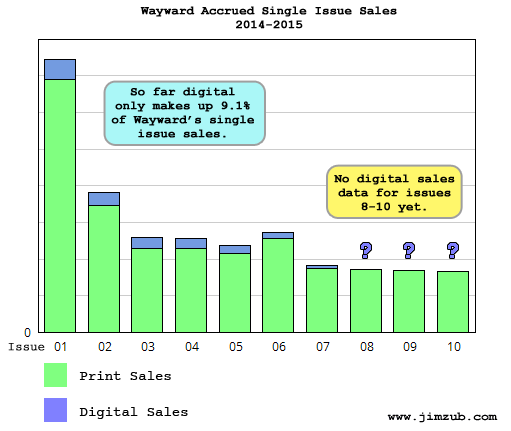
If you compare these to the first chart you’ll see that reorders have helped some of the issues level out. As an example, Wayward#2 has sold an additional 7% of its initial order numbers in reorder copies.
I was surprised to see that Wayward is primarily a print-heavy audience right now. Digital sales (the vast majority of which are through comiXology) only make up 9.1% of our current sales totals (and I didn’t count issues 8-10 in that calculation since I don’t have digital data for those issues yet). I was expecting a higher percentage of digital, but now that many of our early issues are sold out at Diamond that number will almost certainly increase.
Okay, so how about trade paperbacks?
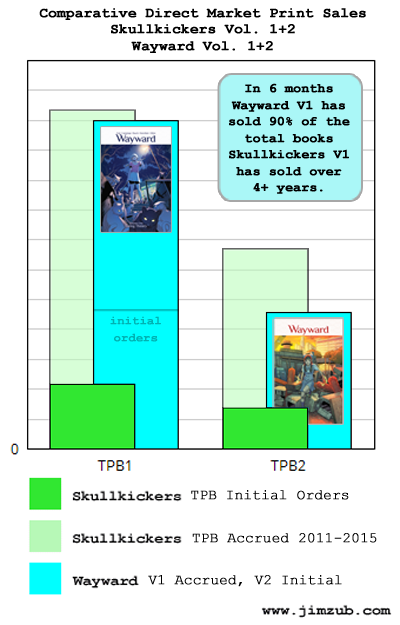
In short, Wayward is kicking ass in trade. Image printed a very aggressive number of Wayward Vol. 1: String Theory books and in the past six months we’ve moved a big chunk of that stock thanks to great word of mouth and a $9.99 cover price. Although convention sales aren’t reflected in that chart, I can anecdotally say that Wayward Vol. 1 sells very well for me at shows. I usually just tell people “It’s like Buffy in Japan”, mention it’s only $10 and they’re in.
I know a few other creators I’ve spoken to have been wary of the $9.99 first volume price point, but so far on Wayward it’s working well. Image printed enough copies that our price per unit is incredibly small and that means it won’t take long to get that book into the black. Most importantly, the $9.99 pricing has paved the way for a lot of new readers to try it out. It’s a loss leader to build our overall audience, banking on the fact that they’ll come back for Volumes 2, 3, and beyond. I’ve been able to sell multiple copies to people to give as gifts or buy again even though they have the single issues. $10 feels like a reasonable price to spontaneously try something new, especially at a convention. I don’t think the value pricing is useful on a mini-series collection or short run, but for an ongoing series like Wayward it seems to be helping.
Skullkickers has always had a trade-waiter readership and I’ve been happy with our TPB sales but Wayward is gaining ground at a ridiculous rate. In six months Wayward Vol. 1 has sold about 90% of the lifetime sales of Skullkickers Vol. 1 from the past four and half years. Yeah, that’s kind of nuts. Initial orders on Wayward Vol. 2 were almost the same as volume 1, so I’m also curious to see how it’s selling in six months time.
Now that Skullkickers is complete it moves into new territory for me. Over the next year I’m going to see what the long tail sales are like for the six trade paperbacks and three deluxe hardcovers that encompass the series. Will more people try it out knowing they can read it all or does the finality of it and lack of new issues make it less visible? I genuinely don’t know.
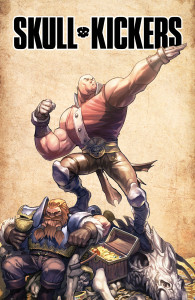
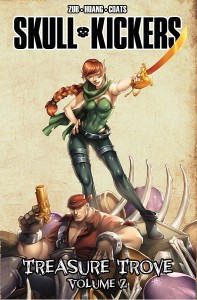
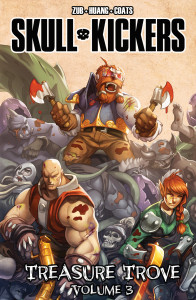
On the deluxe book front, the first year of Wayward is being collected in a spiffy oversized hardcover called, appropriately enough, Wayward Deluxe. It’s a bit mind boggling for me to realize that in one year we put together enough material for a 320 page tome, but we did and I’m hopeful that it makes it onto some comic buying gift guides and sells well through the holidays.
As I mentioned in my previous article, I think Wayward’s success has been a combination of Image’s growth, my increased career visibility, and an engaging concept coupled with Steve and Tamra’s knockout artwork. The audience I’ve built up over the years through working on Pathfinder, Samurai Jack, Conan Red Sonja, Dungeons & Dragons, Street Fighter, and Figment have come together along with Skullkickers readers to give Wayward some wings. If we can keep that grassroots interest going I’m hopeful the series will have a long life.
If you’ve bought Skullkickers or Wayward, as a retailer or reader, you have my deepest thanks. In an industry with giant media companies and world-beating superhero brands I’m doing my best to carve out a little spot for my creations and I couldn’t do it without your help.
If you found this post interesting, feel free to let me know here (or on Twitter), share the post with your friends and consider buying some of my comics, donating to my Patreon, or buying comics from me in person if you see me at a convention.

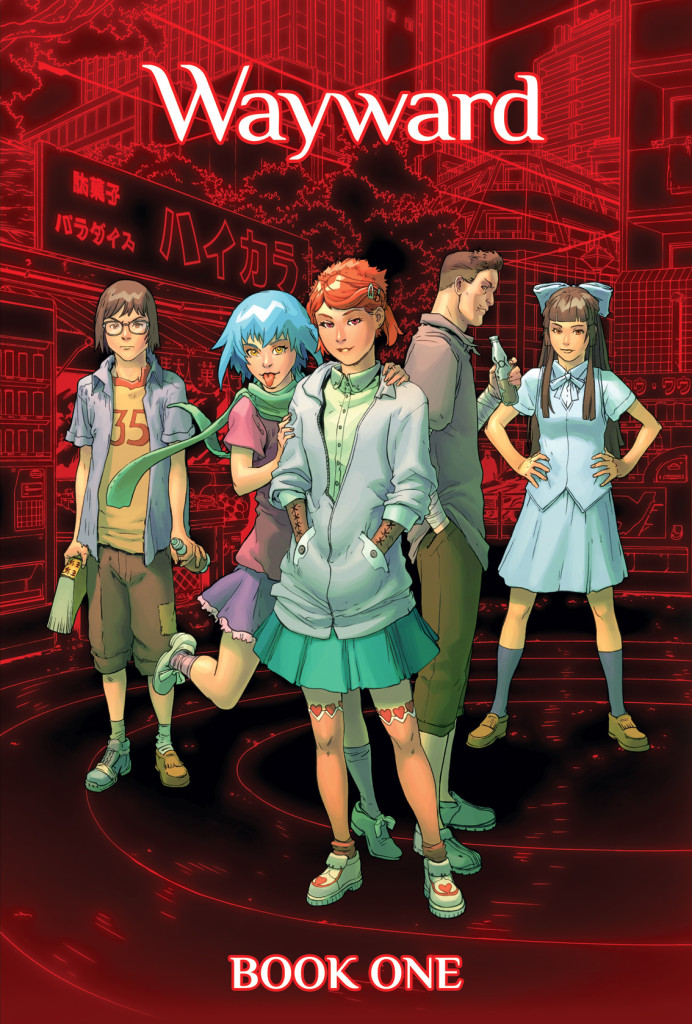
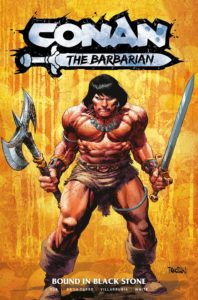



 Zub on Amazon
Zub on Amazon Zub on Instagram
Zub on Instagram Zub on Twitter
Zub on Twitter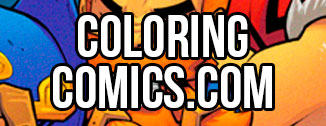
Hi,
Fascinating article, thank you for sharing this info.
May I ask what is the source of your data? Do you get sent reports from Image or is this from Diamond or somewhere else? I ask because AFAIK Diamond sales information is the best publicly available data, but is nonetheless lacking e.g. non-North American sales and digital sales.
I’ve heard from different sources that a general estimate for digital sales is around 10% of print. I have no idea where that figure comes from, but if it’s anything like correct then your 9,1% digital sales figure is maybe less surprising.
Congratulations on the (continued) success of Wayward!
-BM
My data source is the extensive sales report sent by Image to the creator of a series. They have reports for each single issue, trade, and also twice yearly ‘accruals’ that give updates on reorders, long term book sales, and digital sales. It includes non-North American sales.
My surprise came more from the fact that Skullkickers has sold a higher percentage in digital.
Great article as always, Jim. Fascinating stuff. It’s great that you’re so open with your data. While my ability to put this type of information to use is distant at best, I know many an indie creator is furiously taking notes.
Or you know… bookmarking the page…
I’m pleased to hear that Wayward is doing well. The concept grabbed me, then the writing (and the wonderful artwork) has left me a fan.
Loved this article, too. Thank you.